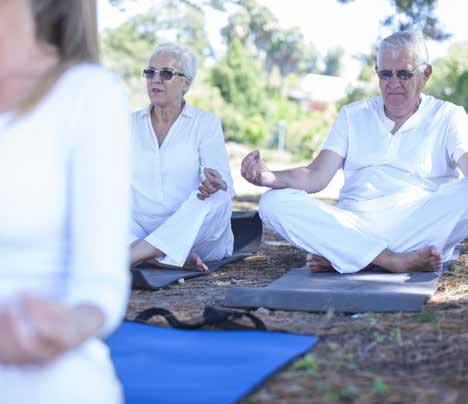
Pathways through pain
Mindfulness and relaxation
"Studies show that mindfulness can make changes in the brain and the avoidance strategies like not going out when asked are reduced. The aim is to adopt approach strategies that help you to break down the task and solve the problem"
Relaxation practice and mindfulness
It is important to take time out for yourself and set appropriate goals for your mood and your pain. Sometimes, when you experience pain, excessive worry and anxiety it can mean that you hold yourself a little stiffer than normal. Activities like relaxation practice and mindfulness can help.
Relaxation might involve, reading a book or listening to music or doing some relaxation exercises.
Here is a brief example of a relaxation exercise, starting at your feet and working your way up to your face1:
- Loosen your clothing, take off your shoes, and get comfortable
- Take a few minutes to relax, breathing in and out in slow, deep breaths
- When you're relaxed and ready to start, shift your attention to your right foot. Take a moment to focus on the way it feels
- Slowly tense the muscles in your right foot, squeezing as tightly as you can. Hold for a count of 10
- Relax your right foot. Focus on the tension flowing away and the way your foot feels as it becomes limp and loose
- Stay in this relaxed state for a moment, breathing deeply and slowly
- When you're ready, shift your attention to your left foot. Follow the same sequence of muscle tension and release
- Move slowly up through your body, contracting and relaxing the muscle groups as you go
- It may take some practice at first, but try not to tense muscles other than those intended
Mindfulness practice
The practice of mindfulness or meditation can help you manage your pain and the stress that comes with persistent pain2. In short, it is the calm awareness of one's physical sensations, thoughts and feelings. When you manage your thinking you can learn to accept your pain and find different paths to improve your quality of life.
Reminding yourself to take notice of your thoughts, feelings, body sensations and the world around you is the first step to mindfulness.
Mindfulness meditation involves sitting silently and paying attention to thoughts, sounds, the sensations of breathing or parts of the body, bringing your attention back whenever the mind starts to wander.3
Yoga and tai-chi can also help with developing awareness of your breathing.-
References
1. http://www.helpguide.org/articles/stress/relaxation-techniques-for-stress-relief.htm Last accessed November 2016
2. http://www.stillmotion.net.au/mindfulness_programs_Sal_Flynn.html Last accessed November 2016
3. http://www.nhs.uk/conditions/stress-anxiety-depression/pages/mindfulness.aspx Last accessed November 2016







